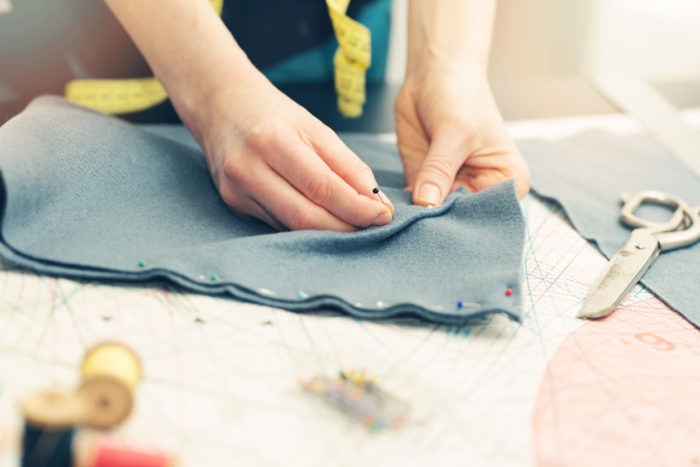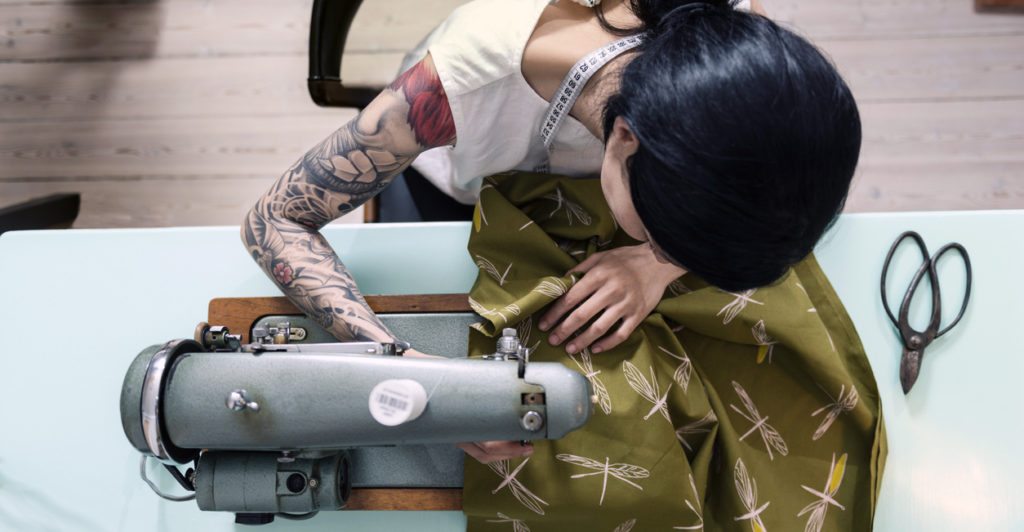When Professor Dilys Williams established the Centre for Sustainable Fashion at the London College of Fashion, sustainable fashion was a foreign idea to most industry insiders and consumers. Fast-forward almost 10 years and we’ve come to a pivotal point, where the industry has to adapt – and quickly. Williams, who made the move into education after seeing firsthand the unintended consequences some of her decisions were having as a designer, says change is afoot.
Despite the problems that are likely to crop up in the coming years, Williams is certain that fashion can be used as vehicle for real change. “There’s a real cultural, widespread questioning going on at the moment,” she says. Right around the world, both industry insiders and fashion consumers are starting to take a closer a look at how fashion impacts on the earth and how fashion can be used to incite social change. Williams says that young up-and-coming designers, in particular, offer hope. “They’re the first generation to really understand sustainability and climate change,” she says.
New Frontiers
To truly change the industry we need to start thinking about sustainability in different ways. “Sustainability is always approached from a technical perspective and looking at what we can do less of, and how we can reduce our negative impacts,” Williams explains. Fashion designers should think about the true definition of design, says Williams, which isn’t concerned with fast fashion trends. It’s about creating something that’s better than what has been created before – which isn’t easy, especially for smaller businesses. “Often you don’t always have the luxury of thinking about sustainability,” Williams says. That’s when small changes become crucial. “It’s about finding ways people can change things in their own roles,” she says.
As for global fast-fashion companies, Williams is adamant that there are great people involved with the brands who care very deeply about the current situation. The noise is definitely growing within the industry, but there’s often a tendency for companies to oversimplify their sustainability ambitions. “It’s more honest to say we know there’s a problem, we know we’re part of the problem, we’ve got goals to be climate positive, we’re just not sure how we are going to get there.”
Play Your Part
Young designers and fast-fashion labels might be more clued-up on sustainability issues, but how easy is it for everyday fashion consumers to create positive change with their purchases? Williams agrees there’s a real disconnect between clothing manufacturing and the finished product. In an ideal world, Williams says, we shouldn’t have to think about what’s going on behind your clothes. “If you’re going out to buy a beautiful garment for a special event and someone shows you a picture of a textile factory, you’re going to want to disconnect from that.”
While the impact of looming water shortages, material scarcity and climate change is set to have the most devastating effect in impoverished countries, which often seem like they’re worlds away, we can all play our part in reducing the impact we have on the planet. At the end of the day, we all get dressed every morning, we all decide how we are going to look and what we’re going to wear. “Fashion is something we all have a say in,” says Williams. “Whether we’re professionals in the industry or citizens wearing clothing we can all be a bit more of an activist. It’s something you can do through the decisions you make, what you buy, how you look after it.”
Even if we are aware that buying sustainably and ethically made fashion is better for the world, often purchasing fast fashion comes down to a more affordable price tag. But Williams says it’s a common myth that fast fashion is always the cheaper option. In the United Kingdom, consumers are buying four times as many clothes as they were 10 years ago, Williams says. “You’ve only got one body, you don’t need to change your clothes that often.”
Fast Fashion
Things aren’t set to slow down either: apparel consumption is predicted to rise by 63% by 2030, according to recent report Pulse of the Industry. Across the same period, waste created by the industry is set to rise by 60% to 148 million tons. To combat excess consumption we need to start thinking about quality over quantity. “We need to stop being so easily dissatisfied with what we’ve already got”, Williams says.
One of the biggest problems facing consumers at the moment is a lack of options. “We work with a lot of those big fast fashion companies and they’re looking at ways to do things differently”, Williams says. “But we also need to encourage people to think twice about what is beautiful and whether saving up and buying something really special is going to give them more satisfaction.”
Fashion has always been about what’s new, but to really change the fashion system as it is, we need to fight the idea that trends and newness are inseparable. “Everyone is bombarded with messages saying they’re not on-trend unless they’ve bought something new,” says Williams. “We need to open this up and make sure this isn’t the only message.” With this in mind, she points out that before fast fashion existed we were forced to be more creative with fashion. “We swapped clothing with friends, we altered things, we bought more vintage.”
Fortunately fashion companies are beginning to realise they can’t continue the way they are. “There are already water scarcities, there are land use issues, even the big businesses know they won’t be doing so in 10 years’ time. The system needs to change.”








